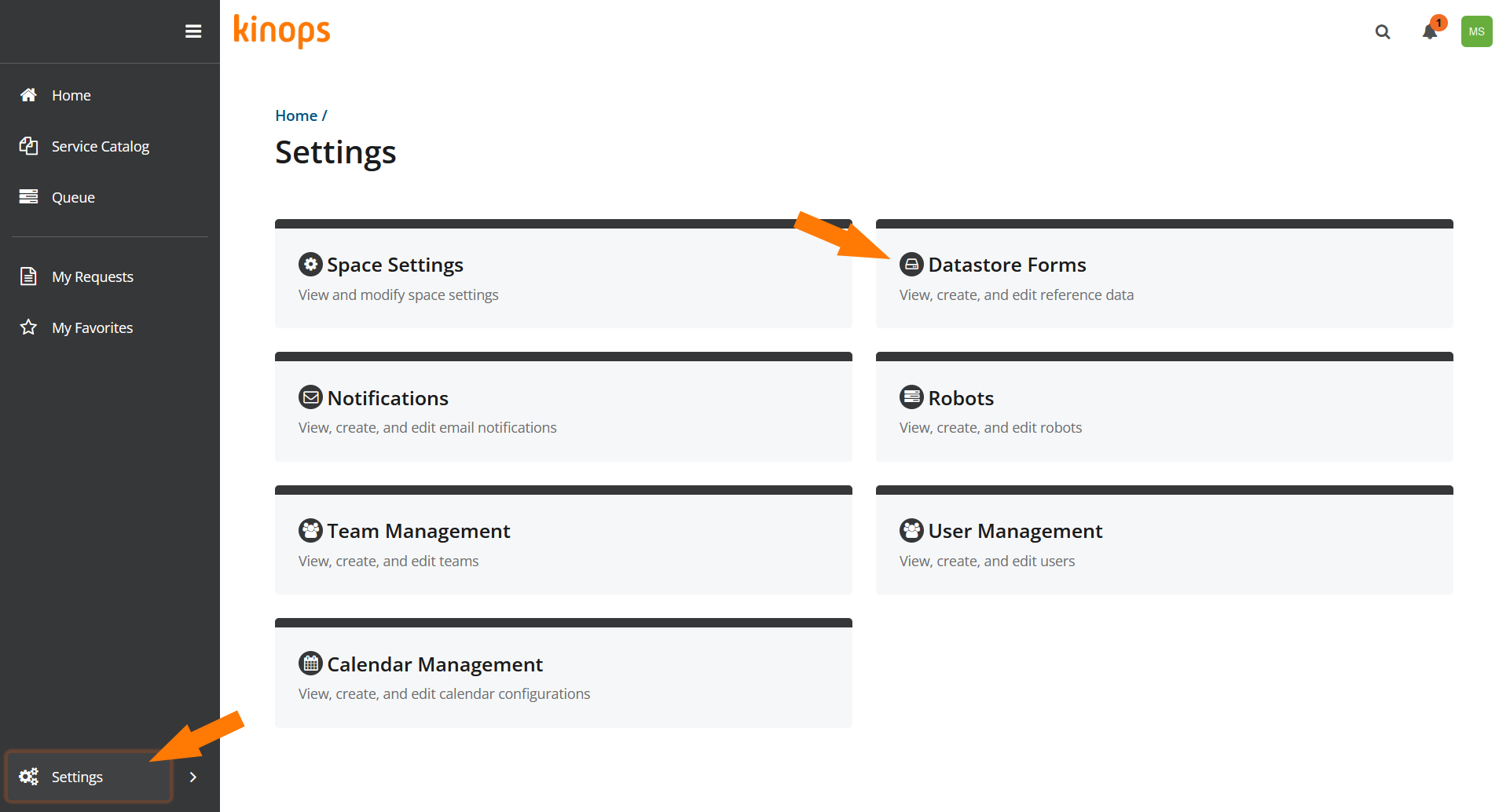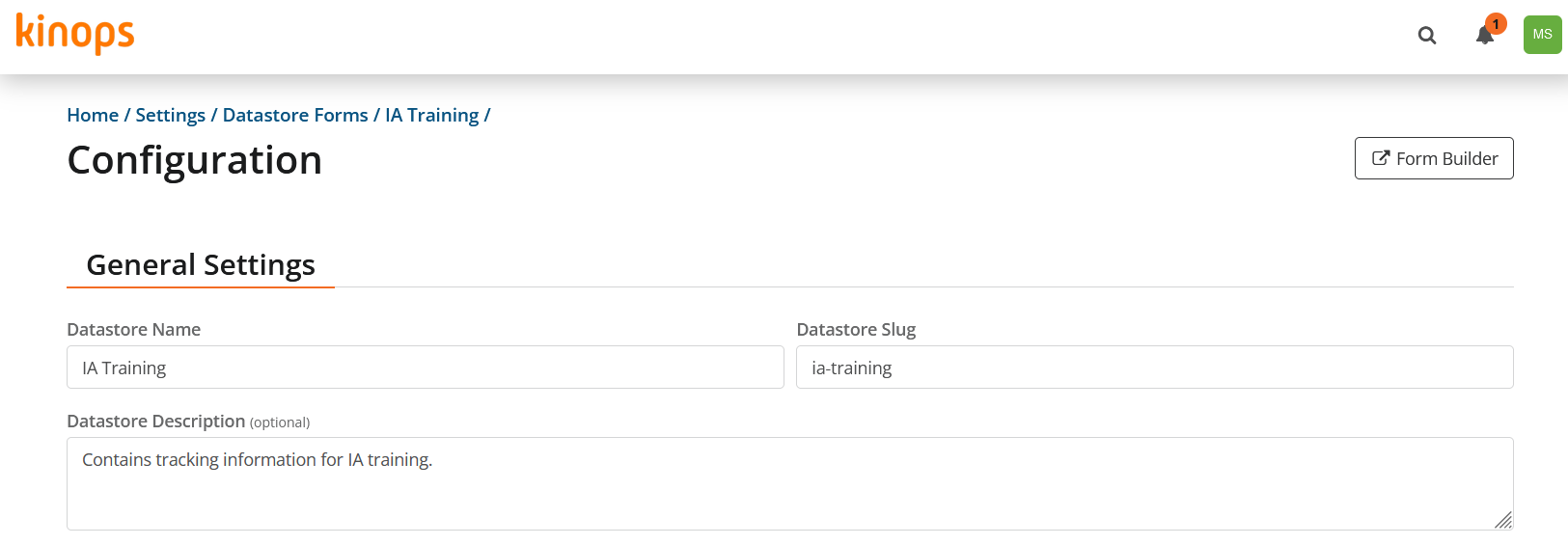Configuring a Datastore Form
Portal-Specific Content
Portals and front-end code are heavily customizable, so exact navigation processes and example images may differ in your environment.
Overview
Each datastore form has its own configuration settings. This guide discusses each setting and how they interact with other areas of the Kinetic Platform.
Viewing Configuration Information
Follow these steps to view configuration settings for a datastore form:
-
Navigate to to your bundle's Settings page and click Datastore Forms.

-
Click the down arrow to the right of the name of the datastore you want to configure.

The configuration page comprises three sections: General Settings, Table Display Settings, and Bridge Configuration.
General Settings

In the General Settings section, you can view and change the datastore form's name, slug, and description.
Table Display Settings

This section of the configuration controls what is rendered when searching the datastore form. You can specify which search index to use by default, the sorting direction, and which field columns should display by default when you view form records.
Bridge Configuration

Bridge qualifications determine what searches a service can perform. For example, you could set up a search for all active records, or one for all records where a certain field matches a parameter the service passes in. This gives you both flexibility and control and ensures that form developers don't need to understand the data to be able to search it. They simply need to use the qualification provided and pass the requested parameters to they get back the data they need.

Qualifications can be single or multiple result. You'll want to make sure that option is selected correctly, because a single qualification will error if multiple results are returned.
The qualification may have no parameters, one parameter, or multiple parameters as is appropriate for your search. Keep in mind that the search parameters must align with the index provided for the search. For example, if the search is configured by user, the index should be User.

A query must contain the following values:
- index={a valid index for the form}
- formSlug={the form slug}
- the rest of the search query
Fields of the form itself (such as the id or handle) are referenced directly. Fields added to the form via the Form Builder are part of the values array and can be called using a format of "values[field name]". Parameters are available in the query using a format of "${parameters([parameter name here])}".

You can also assign attributes, which are the fields that will be returned by the searches the name under which they'll appear to the recipient. Mappings can match existing fields, but you can also combine fields to create new mapping values. Say you have first and last name fields, but you also want to pass a full name field back to the service. You could create an attribute of "Full Name" and map both the "First Name" and "Last Name" fields to it.
Updated 11 months ago
